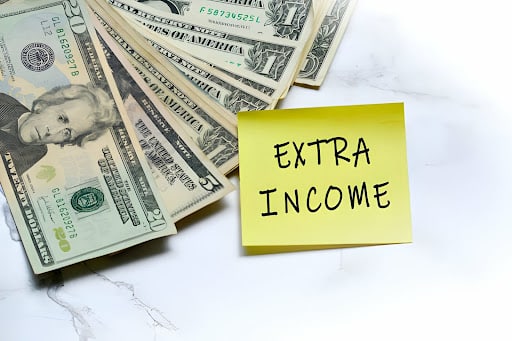12 Proven Ways to Pay Off Student Loans Faster

Paying off student loans quickly can seem daunting. The average student loan debt balance is over $30,000 in the US. However, there are strategies you can use to pay down your loans faster and save money on interest payments. This comprehensive guide covers 12 powerful tips to help you tackle student debt.
Comparison of Strategies to Pay Off Student Loans Faster
| Strategy | How It Works | Pros | Cons |
|---|---|---|---|
| Avalanche Method | Pay off highest interest loans first while making minimum payments on the rest | Saves the most money on interest payments | Can seem slower as high balance loans remain |
| Snowball Method | Pay off the smallest balance loans first | Provides motivational “quick wins” | Pays more total interest over time |
| Refinancing | Take out new loan with lower interest rates to pay off current loans | Lower monthly payments; less interest over loan term | Credit score requirements; fees to refinance |
| Payroll Deduction | Authorize automatic monthly student loan payments through paycheck | Ensures no missed or late payments | Less flexible; cannot adjust payment amounts easily |
| Income-Driven Repayment Plans | Loan payments based on a percentage of income; balances are forgiven after 20-25 years | Lower monthly payments for eligible borrowers | More interest paid over loan term |
| Make Extra Payments | Put any bonuses, gifts, or tax refunds toward paying down the principal | Pays loans off early; less interest | Requires budgeting discipline |
| Deferment or Forbearance | Temporarily postpone monthly payments; interest may still accrue | Allows flexibility if struggling financially | Loans not paid down; more interest over long run |
As the table shows, each approach has advantages and disadvantages. The best method depends on your specific situation. Combining multiple strategies can help you save the most money and pay off debt faster.
Tips to Pay Off Student Loans Quicker
Avalanche Method – With the avalanche method, you pay off loans with the highest interest rates first, while making minimum payments on the others. This saves money on interest compared to other approaches. Use student loan refinancing calculators to determine which loan to tackle first.
Snowball Method – The snowball method prioritizes paying off loans with the smallest balances first. When one loan is paid in full, apply its monthly payment to the next smallest. This gives milestones to celebrate along the way.
Refinance Student Loans – Refinancing replaces existing federal and private student loans with a single new loan at a lower interest rate. This reduces monthly payments and total interest costs. Qualifying for refinancing depends on your credit score, debt-to-income ratio, and other factors. SoFi, Earnest, and Lendkey are top refinancing lenders.
Enroll in Auto-pay – Setting up automatic monthly payments from your bank can secure an interest rate discount of 0.25% or more. This saves money without any additional effort. Nearly all loan servicers offer this incentive for electronic debits of your choice.
Payroll Deduction – Check if your employer allows direct payments toward student loans via payroll. The amount comes out of each paycheck before taxes, so you avoid income tax on it. Consistently chipping away helps knock down the principal every month.
Apply Raises To Loans – As your income grows, put all pay increases directly toward loan payments. With the 10-year standard payment plan, you may continue paying the same amount forever without realizing it. Having raises automatically applied shortens the payoff timeline instead.
Make Bi-weekly Payments – Most loans have one monthly payment. Making half payments every other week, or 26 per year, equals an extra monthly payment annually. This simple move cuts down interest and years of payments. Set up automatic bi-weekly payments to make it effortless.
Target Bonuses And Tax Refunds – Use any extra or unexpected influxes of cash to make principal-only payments. Whether a work bonus, cash wedding gift, or tax refund, put that money toward the highest interest loan not tied to a specific project. This chops away at balances due rather than letting the funds sit idle.
Earn And Apply Rewards – Companies like Upromise and LendingTree offer cash back rewards from online purchases that get directly applied to loans. It may not seem like much individually, but over time the rewards rack up. Download apps to start earning small bits of “free money” against your debt whenever you shop online.
Lower Monthly Payments – Enrolling in income-driven repayment plans from the government can reduce federal loan payments to 10-15% of discretionary income. Remaining balances are forgiven after 20-25 years. Payments may not cover accruing interest, so balance continues growing. Read the fine print first.
Deferment As Last Resort – If facing financial hardship from job loss, medical bills, or other emergencies, deferment or forbearance allows temporarily stopping monthly payments. Up to 36 months of postponed payments is possible. Just know interest keeps accruing, then gets added to the principal when payments restart. This increases total debt owed over the long run.
Pay Off Interest First – An alternative to the avalanche and snowball methods is paying down accruing interest across all loans first before putting extra cash toward any specific principal. This keeps balances from rising further. The highest rate principal can be targeted aggressively. But paying only the interest and no principal never gets loans paid off fully.
Other Ways to Supplement Loan Repayments
Beyond these top 12 tips, secondary options to generate extra money for paying student debt include:
- Taking on a side gig like rideshare driving, freelance writing, website design, or online tutoring
- Renting out an extra room in your house with Airbnb
- Selling unused items on eBay, Craigslist, Facebook Marketplace or apps
- Participating in focus group studies for quick cash
- Donating blood plasma to earn upwards of $400 per month
- Entering prize sweepstakes with rewards toward balance pay-downs
- Using cash back credit card rewards against principal owed
- Withdrawing retirement account contributions without penalty (not generally advisable long-term)
The key is locating recurring and one-time sources of cash outside regular budget living expenses that can chip away at loans. Even small amounts add up over months and years toward financial freedom faster than waiting out the full 10-15 year terms.
Every dollar possible should get thrown toward the debts accruing the highest interest rates first and foremost. The math works exponentially in your favor when targeting high rate principal balances aggressively. Just staying diligent with payments will get you there eventually too, but more strategic approaches pay dividends.
Frequently Asked Questions (FAQ)
Here are answers to some common questions related to quickly repaying student debt:
Q: Should I prioritize paying off student loans or building an emergency fund first?
A: Financial experts generally recommend having a emergency fund covering 3-6 months of living expenses before diverting extra cash toward other financial goals like debt repayment. This helps avoid taking on even more debt in the event of unexpected crises. If your employer matches any 401k contributions, at least take advantage of the free matching money up to company limits before putting anything extra toward loans. Once you have a secure emergency fund and any 401k match money, then focus intensely on debt payoff.
Q: How much can paying bi-weekly instead of monthly save on loans?
A: By making half-payments equivalating to one extra payment yearly, you can shave off time and interest costs significantly. On a 5% interest $30,000 loan with a 10 year repayment, bi-weekly autopay means finishing 3 years faster and $6,600 less in interest paid.
Q: Where’s the best place to refinance student loans?
A: Top lenders renowned for low interest rate refinancing include Splash Financial, Earnest, SoFi, Lendkey, and Laurel Road. Compare all lenders’ rates and fees carefully. Aim for interest decreases of 2% or more to make it worthwhile, with no application, origination, or prepayment penalties. Because underwriting is stricter for refinancing than taking out initial loans, having robust income, strong credit scores, and a low debt-to-income ratio help.
Q: Can I deduct student loan interest on my taxes?
A: If eligible, the student loan interest deduction lets you reduce taxable income by up to $2,500 annually from interest paid on qualified loans. This includes federal and many private student loans. Parent PLUS loans also qualify. The tax deduction phases out at higher incomes. So double check all requirements for the Student Loan Interest Deduction to confirm your eligibility and maximize savings.
Hopefully this guide gives you a strong blueprint with a variety of student loan repayment strategies to incorporate that suit your unique situation. Consistently take action to make progress on shrinking debts. With diligence and commitment, you can pay off student loans ahead of schedule and free up income sooner to put toward other financial priorities.
For anyone struggling with student debt, also remember help is available. Reach out to loan servicers for flexible repayment options and consider non-profit credit counseling assistance. Don’t let debt overtake your finances or cause prolonged stress in feeling confined. Relief takes initiative and believing your economic freedom is within reach by consistently making smart money moves.
You’ve got this! Now get cracking on slaying those loans once and for all!






